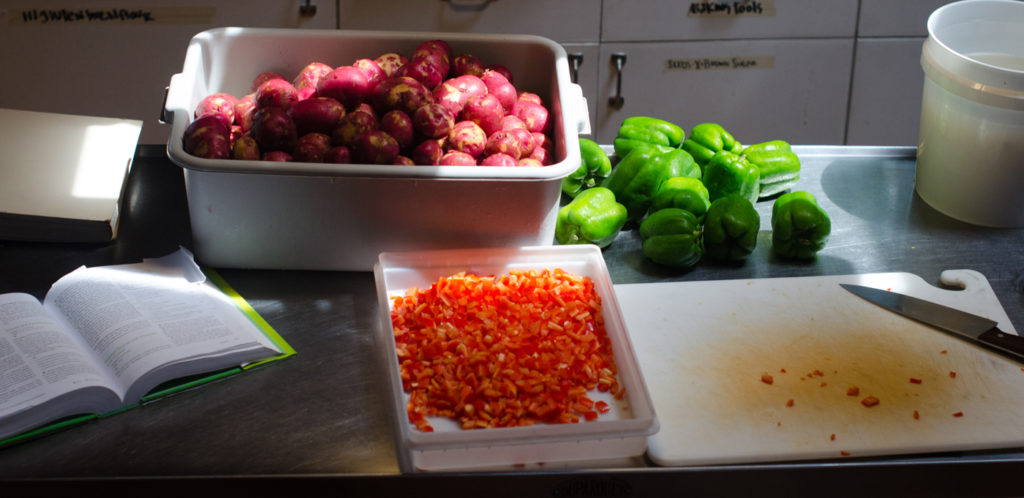Grow Your Community
Cultivating dynamic and vibrant connections through working and eating together
The links between gardens and plate, sheep and knitting needles, forest and wood stove are undeniable in the small Chewonki community. We work alongside each other on the farm and kitchen and around the campsite, and the tangible evidence is easy to see in the form of an evening meal, that first hand-knit hat, and a warm cabin. It is more difficult to wrap words around the intangibles, the interpersonal connections cultivated in participating in these acts.
We speak often at Chewonki of the connection between the head, heart, and hands. Most often, real and rich conversation flows best when our hands are meaningfully engaged in weeding the rhubarb bed or crafting a new maul handle or chopping vegetables.
Most Chewonki experiences are defined by some element of a work component, but not in an abstract or disconnected sense. We literally reap the benefits of our work as it helps to build our thriving community. Our farm and food system are realistic, imperfect, and functional: we raise much of our own food, but most of what we eat is grown off our campus. We transparently wrestle with real decisions and give participants the information and the voice they need to play a role in those decisions, providing them with realistic expectations of the work it takes to move toward a more sustainable community.
Community building exists too outside of the work aspect of the Chewonki food system. The hayloft is a storage space for winter feed as much as it is a place for semester students to gather and giggle in the late afternoon winter light. Meals are a time for valuable discussion but silliness too, sweet opportunities to debrief the day or share an easy laugh. The food itself is fuel for a Boys Camp game of Rocks, or a Saturday evening Semester School contra dance.






